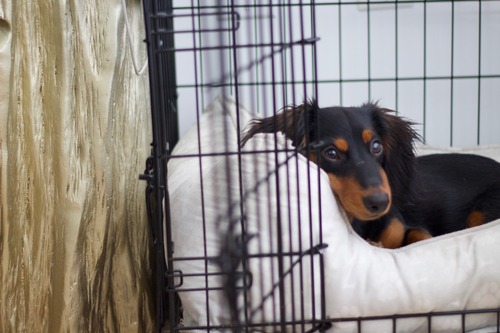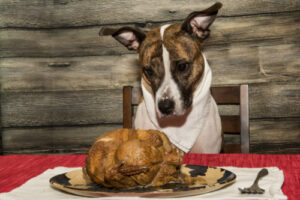Bringing home a new puppy is exciting, but it also comes with the responsibility of teaching them healthy habits. One of the most effective ways to help young dogs adjust to their new home is crate training. Far from being a punishment, crate training a puppy gives them a safe, comfortable space where they can rest and feel secure. When done correctly, it also helps with house training, prevents unwanted chewing, and provides structure. Below, we’ll explore six practical tips for crate training a puppy that set the stage for long-term success. If you’re looking for personalized guidance, the team at Best Friends Animal Hospital in Manchester, NH is happy to support you. Call us today at (603) 625-2378 to schedule an appointment.
Choose the Right Crate for Your Puppy
The first step in crate training a puppy is selecting a crate that matches their size and needs. A crate should be large enough for your puppy to stand up, turn around, and lie down comfortably, but not so big that they can eliminate in one corner and rest in another.
Types of Crates
- Wire crates: These offer ventilation and visibility, making them a great option for many homes.
- Plastic crates: Often used for travel, they provide a den-like feel.
- Soft-sided crates: Lightweight and portable, but best for puppies that aren’t prone to chewing.
Why Size Matters
A properly sized crate teaches your puppy to hold their bladder until they’re let out. Oversized crates may undermine this process. Some models come with dividers so you can adjust the space as your puppy grows.
Create Positive Associations with the Crate
Crate training a puppy works best when the crate is seen as a safe, inviting space. Introduce the crate gradually by leaving the door open and letting your puppy explore on their own.
Making the Crate Inviting
- Place a soft blanket or bed inside.
- Use favorite toys to make the space fun.
- Toss small treats into the crate to encourage exploration.
Never force your puppy inside or use the crate as punishment. Building trust early ensures your puppy views the crate as their own secure retreat.
Start with Short, Positive Sessions
The process of crate training a puppy requires patience and consistency. Begin with short periods of time and gradually increase as your puppy grows more comfortable.
Building Duration
- Start with just a few minutes while you’re nearby.
- Gradually extend the time with the door closed.
- Stay positive with calm praise when your puppy does well.
Consistency is key. Over time, your puppy will learn that the crate is a normal part of their daily routine.
Establish a Routine with Feeding and Breaks
Structure is an important part of crate training a puppy. Feeding meals in the crate can help create a positive connection. After meals, give your puppy a bathroom break before returning them to the crate.
Why Routines Work
Puppies thrive on predictability. By feeding them at consistent times and taking them out regularly, you build trust and reduce accidents. This structured approach helps your puppy understand what to expect each day.
Scheduling Breaks
Since young puppies can’t hold their bladder for long, frequent breaks are essential. A general guideline is one hour for every month of age, up to about six hours.
Balance Crate Time with Exercise and Interaction
While crate training a puppy is helpful for safety and house training, balance is important. Puppies need plenty of exercise, playtime, and social interaction. Spending too much time in the crate can lead to frustration or anxiety.
Healthy Balance
- Use crate time for rest and quiet, not for long-term confinement.
- Make sure your puppy gets exercise before and after crate sessions.
- Provide mental enrichment through toys, training, and interaction.
Remember, the crate is one part of a broader routine that includes bonding and active play.
Stay Patient and Consistent
Every puppy learns at their own pace. Some may adjust quickly, while others need more time. Patience and consistency make the biggest difference when crate training a puppy.
Common Challenges
- Whining: Puppies may whine at first. Avoid immediately letting them out, or they may associate whining with release.
- Accidents: Be prepared for setbacks. Stay calm, clean up thoroughly, and keep building good habits.
- Resistance: Gradual exposure paired with rewards helps reduce pushback.
Over time, most puppies learn to view their crate as a natural part of life, much like their bed or toys.
Helping Your Puppy Thrive
Crate training a puppy sets the stage for a safe and structured home life. By choosing the right crate, introducing it positively, establishing routines, and maintaining balance, you can help your puppy adjust smoothly. While the process requires patience, the reward is a well-adjusted dog who feels secure in their space. If you’d like additional support, Best Friends Animal Hospital in Manchester, NH is here to help with every step of your puppy’s journey. Call us today at (603) 625-2378 to schedule a visit and talk with our team.





